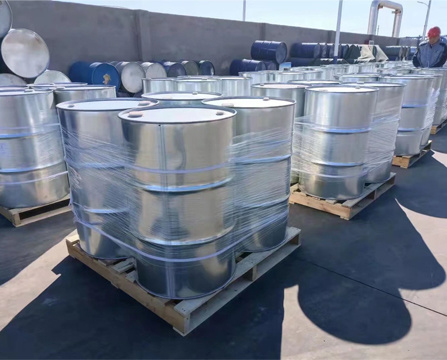Description and Application Scenarios of Butyl Acetate
Time:
2024-05-13
1. Overview
Butyl acetate, often called ethyl butyrate in chemistry, is an organic compound with unique chemical structure and physical properties. Its molecular structure gives it unique solubility, aroma and other characteristics, and has a wide range of applications in industry and daily life. As an important organic solvent and perfume ingredient, butyl acetate plays an indispensable role in modern industry.
2. basic description
Butyl acetate, whose chemical formula is C6H12O2, is a colorless, transparent liquid with a pleasant fruity and strawberry aroma. It has a boiling point of about 144°C and a density of about 0.87g/cm³. Butyl acetate is insoluble in water, but can be miscible with many organic solvents, such as ethanol, ether and so on. In addition, it also has excellent dissolving ability, which can effectively dissolve a variety of resins, flavors and other organic materials. In terms of chemical properties, butyl acetate is relatively stable and not easily oxidized or decomposed.
3. Application Scenarios
Due to its unique physical and chemical properties, butyl acetate is widely used in many fields. Here are some of the main application scenarios:
1. Fragrances and cosmetics: Butyl acetate is widely used in perfumes, cosmetics and other personal care products due to its unique fruity and strawberry aroma. It can increase the aroma and taste of the product and improve the consumer experience.
2. Food industry: Butyl acetate is also often used as a food flavoring agent, especially when making fruit-flavored foods such as strawberries. Its natural fruit aroma can bring unique flavor to food.
3. Coatings and inks: As an excellent organic solvent, butyl acetate is widely used in the production of coatings and inks. It can effectively dissolve the resin and other organic matter, improve the performance of coatings and inks.
Pharmaceutical industry: In the pharmaceutical process, butyl acetate also plays an important role. It can be used as a drug extraction solvent to help extract the active ingredients in plants. In addition, butyl acetate is also used in the manufacture of some pharmaceutical excipients.
5. Plastic and resin processing: In the process of plastic and resin processing, butyl acetate can be used as a plasticizer. It can improve the flexibility and processing performance of plastics, and improve the solubility of resins.
6. Chemical manufacturing: Butyl acetate is also an important raw material for the manufacture of other chemicals, such as acetic acid. These chemicals have a wide range of applications in production and life.
7. Other fields: In addition to the above fields, butyl acetate is also used in rubber, leather, printing, metal processing and other fields. For example, in the printing process, butyl acetate can increase the drying speed of the ink; in the metal processing process, it can be used as a cleaning agent to remove oil and impurities on the metal surface.
4. considerations
Although butyl acetate is widely used in many fields, there are still some matters needing attention in the process of use. First of all, because butyl acetate has a certain pungent odor and volatility, prolonged exposure may cause irritation to the respiratory tract. Therefore, a good ventilation environment should be maintained during use. Secondly, although butyl acetate is relatively safe and stable, it is still necessary to avoid contact with fire and store it in a cool and dry place. In addition, the use of butyl acetate should also comply with the relevant safety procedures and laws and regulations.
In conclusion, butyl acetate plays an indispensable role in modern industry as an important organic solvent and perfume ingredient. Its wide range of application scenarios include perfume cosmetics, food industry, paint ink and other fields. In the use of the process should pay attention to comply with the relevant safety procedures and laws and regulations to ensure safe use and play its maximum value.
Key words:
Ketones
Alcohols





